4n+2 Aromatic Rule

Rules For Aromaticity The 4 Key Factors Master Organic Chemistry

Huckel S Rule For Aromaticity Time Saving Shortcut Youtube

Aromatic Antiaromatic Or Nonaromatic Compounds Chemistry Steps

13 6 Aromaticity Organic Chemistry Ii

Solved Using Hu Ckel S 4n 2 Rule And Other Applicable Cri Chegg Com

15 4 Aromaticity And The Huckel 4n 2 Rule Chemistry Libretexts
Define aromaticity in terms of the Hückel 4n + 2 rule.;.
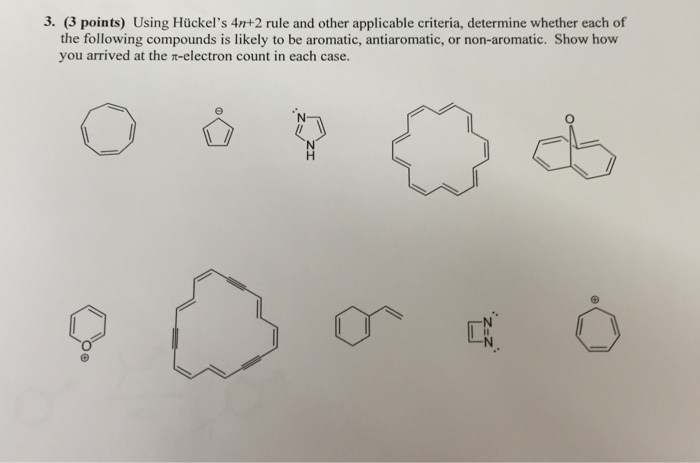
4n+2 aromatic rule. The quantum mechanical basis for its formulation was first worked out by physical chemist Erich Hückel in 1931. The first four solutions of 4n+2 are 2, 6, 10, and 14. In order for a compound to be aromatic, all FOUR of these criteria must be met.
The compound must follow Hückel’s Rule (the ring has to contain 4n+2 p-orbital electrons). The number of pi electrons in borazine obeys the 4n + 2 rule, and the B-N bond lengths are equal, which suggests the compound may be aromatic. All aromatic compounds must have (4n'2) Pi number of electrons.
Aromaticity and the 4 n + 2 Rule • Huckel’s rule, based on calculations – a planar cyclic molecule with alternating double and single bonds has aromatic stability if it has 4n+ 2 p electrons (n is 0,1,2,3,4) • For n=1:. Coal Coal as a Source of Benzene 1675 - Bituminous coal is distilled to form tars Coal 1000 oC gas + liquid + tar illuminating gas H 2 + CH 4 light oil 3.2 gal/ton. N= 0, 1, 2, 3, 4…etc.).
According to Huckel’s rule, all planar aromatic compounds must have 4n+2 pi-electrons where n is an integer (i.e. The pi electron count is defined by the series of numbers generated from 4n+2 where n = zero or any positive integer (ie, n = 0, 1, 2, etc.). This rule estimates whether a planar ring compound will possess aromatic properties or not.
Let's first practice identifying conjugation (since that is one. The Journal of Physical Chemistry C 15 , 119 (29) , -. In 1930 Erich Huckel proposed a rule name Huckel’s rule or (4n+2) rule.
An aromatic compound must have a molecule that contains cyclic cloud of Delocalized π electrons and the π cloud must contain a total of (4n+2) π electrons. Any compound that satisfies the first three rules and contains one of these numbers of pi electrons should be aromatic. I always thought that the fact that the aromatic molecule is planar is caused by aromaticity itself (or even distribution of electrons in the rings above and below aromatic core).
Aromatic compounds exhibit ring current induced magnetic shielding, but the reverse conclusion that ring current induced magnetic shielding identifies aromaticity is not justified. Resonating electrons include both pi electrons and lone pairs. When solving for ‘n’, n must equal to a whole number.
What Compound Results From The 1,4-addition Of One Equivalent Of. This is the simplest rule to check for to determine if a compound is aromatic. Benzene is an aromatic hydrocarbon because it obeys Hückel's rule.
Imidazole, Shown At Below, (is/is Not) Aromatic, Because 4. Rules that are given below-aromatic compounds always cyclical structures. It must follow Huckel's Rule, 4n + 2 pi electrons.
Cyclopentadienyl anion Aromatic Author- Sudhir Bendre 05 6 Huckel's rule The aromatic compounds must contain (4n+2) Tt electrons (n integer number, 0, 1, 2 Other Aromatic svstems Tt electrons = 6 = 4n + 2 n = 1 (integer number) Pyridine Author- Sudhir Bendre Pyrimidine Pyrrole Naphthaline 10 at electrons Thiophene Furan. The molecule needs to be planar to allow for p orbital overlap;. Among the many distinctive features of benzene, its aromaticity is the major contributor to why it is so unreactive.
Don't get me wrong, you still have to put in the time, but using this method to learn the reactions is just amazing. A planar, cyclic, conjugated system is aromatic if it contains 4n + 2 π electrons. If we get a fraction then the molecule DOES NOT obey Huckel’s rule.
A benzene ring has 3 pi bonds thus 6 resonating. The pi electron count is defined by the series 4n+2 where n = zero or a positive integer (0, 1, 2, etc.). It states that a fully conjugated cyclic molecule requires 4n+2 pi electrons, where n is any integer, to be to be considered an aromatic compound.
(g) Non-aromatic as drawn, but has an important resonance structure that is aromatic. The n is 0 or any integer. Describe the difference in properties between an aromatic hydrocarbon, such as benzene, and a non-aromatic polyunsaturated cyclic.
Closed 4n+2 it—bond ring. Skip to content Chemistry Steps. If you are scared of Orgo like I was, don't be.
Solid working knowledge of hybridization will help you tackle problems of this sort. 4) The compound must obey Huckel's rule, which states that an aromatic compound will have a number of pi electrons that is a solution of 4n+2, where n is an integer. Benzene is the most common aromatic molecule.
C None Of The Above. Furthermore, the 4n+2 rule as indicator of aromatic stabilization should only be used in conjunction with the ring size;. The 3-methyl-hexyl Carbocation Is Most Vulnerable To A) 4n B) 2n + 4 C) 4n+2 D) 2 A Hydride Shift B.
In general, we can describe a quasi aromatic compound as a compound, which is ionic in nature with a counter ion, and the $\pi$ electrons in such compounds follow Huckel's rule ($4n+2$). (d) A non-aromatic, conjugated 6 p-electron system (e) A non conjugated hydrocarbon. How to determine if the compound is cyclic.
But in polycyclic aromatic hydrocarbons (PAH), it’s not sufficient to know whether the molecule. Antiaromaticity is a characteristic of a cyclic molecule with a π electron system that has higher energy due to the presence of 4n delocalised (π or lone pair) electrons in it. Professor McBride’s website resource for CHEM 125b (Spring 11) https://webspace.yale.edu/chem125/ This website may include third-party materials pertaining to relevant topics, provided for the user’s convenience.
Number of π electrons = 4 n + 2 6 = 4 n + 2. Clar’s p-sextet rule 5/2/15 The 4n+2 Hückel rule strictly holds for monocyclic systems like benzene and cyclooctatetraene Coronene 24 p electrons / 4n Pyrene 16 p electrons / 4n EIGHT RULES OF AROMATICITY The Clar’s p-sextet rule is a generalization of the 4n+2 Hückel rule to polycyclic aromatic hydrocarbons (PAH) 18. In 1931, German chemist and physicist Sir Erich Hückel proposed a theory to help determine if a planar ring molecule would have aromatic properties.
If you count the number of pi electrons in the ring, you check to see if it equals any answer for (4n + 2) and then you know it's aromatic. Click here to learn more about Huckel’s Rule. How do i get that the molecule is flat?.
Each element of the ring within the structure must and should have a p-orbital ring which is in a perpendicular form to the ring, and this makes it a planar molecule All the compounds obey the Huckel’s Rule, i.e all the aromatic compounds should have the (4n+2) Pi number of electrons. A closed loop of 4n+2 π electrons;. 4n+2 π electrons in the cyclic conjugated π system.
4n + 2 = number of π electrons in the hydrocarbon, where n must be an integer. In consequence, those that follow the Hückel 4N + 2 rule show higher aromaticity (7H and 9H) than the others. Oila, benzene satisfies Huckel's rule.
Huckel rule and its applications - definition Huckel's Rule (4n+2 rule):. In 1930 Erich Huckel proposed a rule name Huckel’s rule or (4n+2) rule. Each element of the ring in the structure should and should have a p-orbital ring, which is in perpendicular form to the ring, and this makes it a planar molecule All compounds are subject to the Hekel Rule, i.e.
But it behaves as acid and form salt with reaction of base to form potassium salt of cyclopentadienide which is aromatic and negative charge is involved in resonance due to conjugation. Huckel's rule can become a little bit tricky when cations and anions are being evaluated for aromaticity. To avoid the instability of antiaromaticity.
The aromatic compounds are always cyclic structures. Significance of Huckel’s (4n+2)π Electron Rule. It has an "aromatic" odor.
What is the Huckel’s rule and how are the 4n+2 and 4n π electrons stabilize aromatic compounds and destabilize antiaromatic compounds. For 4N + 2 rings, all used aromaticity indices are correlated, whereas for another ones not always. Huckel's Rule (4n+2 rule):.
A Pedestrian Approach to the Aromaticity of Graphene and Nanographene:. In the case of benzene, we have 3 π bonds (6 electrons), so 4n + 2 = 6. His rule states that if a cyclic, planar.
As long as a compound has 4n+2 π electrons, it does not matter if the molecule is neutral or has a charge. In other words, quasi aromatic compounds are those in which the charges present on the molecule are a part of aromaticity of the compound. 4n+2 = Number of Resonating Electrons.
The nature of the occupied π orbitals must. Every atom must be conjugated. Huckel’s Rule for Aromaticity + Time-saving shortcut Need help with Orgo?.
The FOUR Rules of Aromaticity. In the case of purine tautomers, their stability is consistent with changes in aromaticity, with the much more aromatic 9H and 7H. Huckel’s Rule is used to estimate the aromatic qualities of any planar ring-shaped molecule in the field of organic chemistry.
Can 4n+2 equal six, given the restrictions on the value of n?. If n equals 1, then 4n+2 equals 6. Benzene is stable and the electrons are delocalized.
The compound must be cyclic ;. An aromatic compound must have a molecule that contains cyclic cloud of Delocalized π electrons and the π cloud must contain a total of (4n+2) π electrons. Download my free guide ’10 Secrets to Aci.
For example, the benzene molecule, which has 3 π bonds or 6 π electrons, is aromatic. Let’s understand it by taking the example of Benzene and Cyclo octa-tetraene. In 1931, Hückel came up with his famous formula to characterize aromatic compounds, which is popularly known as Hückel's (4n + 2) π-electron rule 106–108.
About Press Copyright Contact us Creators Advertise Developers Terms Privacy Policy & Safety How YouTube works Test new features Press Copyright Contact us Creators. The 3 C=C in benzene mean that we have 3 pairs of π electrons = 6 π electrons = a 4n+2 number where n=1. Hückel’s Rule also applies to ions.
In order to be aromatic , a molecule must have a certain number of pi electrons (electrons with pi bonds, or lone pairs within p orbitals) within a closed loop of parallel, adjacent p orbitals. ‘It is amazing that the simple Hückel 4n+2 rule predicts the aromaticity or anti-aromaticity of a molecule better than sophisticated density functional theory calculations,’ Anderson. It is now considered aromatic because it obeys Hückel's rule:.
Originally, benzene was considered aromatic because of its smell:. I find this a little bit confusing. Instead, chemists often use simple qualitative rules such as Hückel’s (4n + 2) rule.
It was first expressed succinctly as the 4n+2 (actually 2+4n) rule by von Doering in 1951. (c) An aromatic system because n=2 in the Huckel 4n+2 rule. Use the Hückel 4n + 2 rule to determine whether or not a given polyunsaturated cyclic hydrocarbon should exhibit aromatic properties.;.
The $\ce{^{1}H}$ and $\ce{^{13}C}$ NMR spectroscopic characterization of the reported new cyclooctatetraene dications indicates these ions possess those characteristics expected of a $\ce{C8}$ 6 π aromatic system and hence further extends the evidence for the great predictive utility of the $4n+2$ Hückel rule. (f) Non-aromatic as drawn, but if H- were removed would give an aromatic cation. Huckel’s rule is used to identify the Aromaticity of a compound.
The electronegativity difference between boron and nitrogen, however, creates an unequal sharing of charge which results in bonds with greater ionic character, and thus it is expected to have poorer. Hückel’s rule is a simple application of LCAO. Meenal Gupta, Vikram University, Ujjain 9.
In organic chemistry, Hückel's rule estimates whether a planar ring molecule will have aromatic properties. N = 1 (an integer). Huckel's Rule is simply a summary of many experimental observations:.
Huckel’s rule is used to identify the Aromaticity of a compound. 8 (cyclooctatetraenide anion), with ten π electrons obeys the 4n + 2 rule for n = 2 and is planar, while the 1,4-dimethyl derivative of the dication, with six π electrons, is also believed to be planar and aromatic. In order to be aromatic,a molecule must have a certain number of pi electrons within a closed loop of parallel, adjacent p orbitals.
The Huckel Rule For The # Of Pi Electrons In An Aromatic System 2. There must be a p orbital on every atom;. Aromaticity was first solely applied to organic cyclic hydrocarbons.
Because a closed bond shell of π electrons defines an aromatic system, you can use Hückel's Rule to predict the aromaticity of a compound.
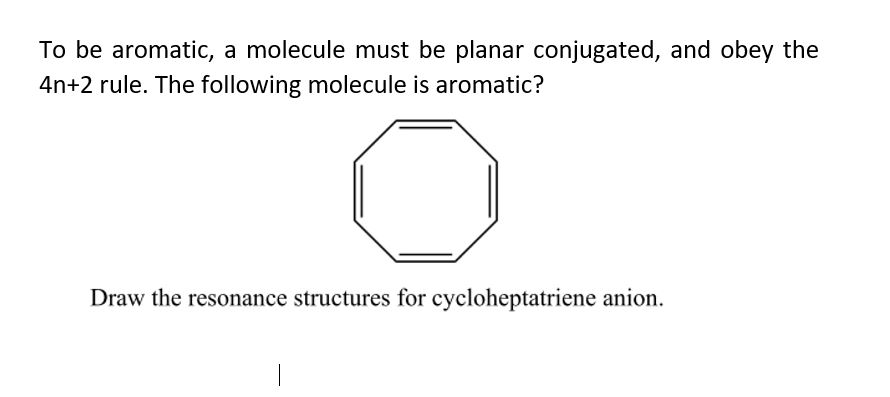
Answered To Be Aromatic A Molecule Must Be Bartleby
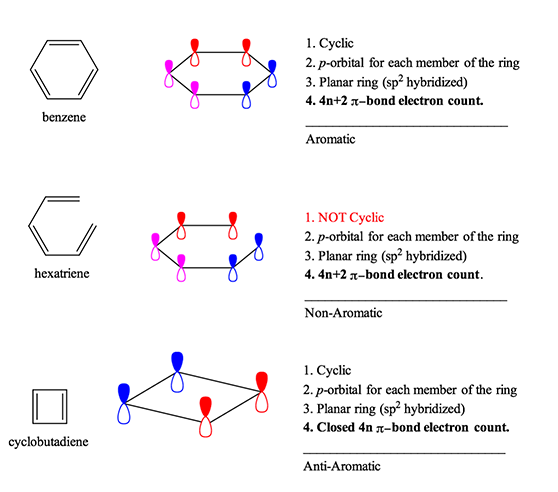
Aromaticity Rules And Definition Organic Chemistry Help

According To Huckel S Rule A Compound Is Said To Be Aromatic If It Contains
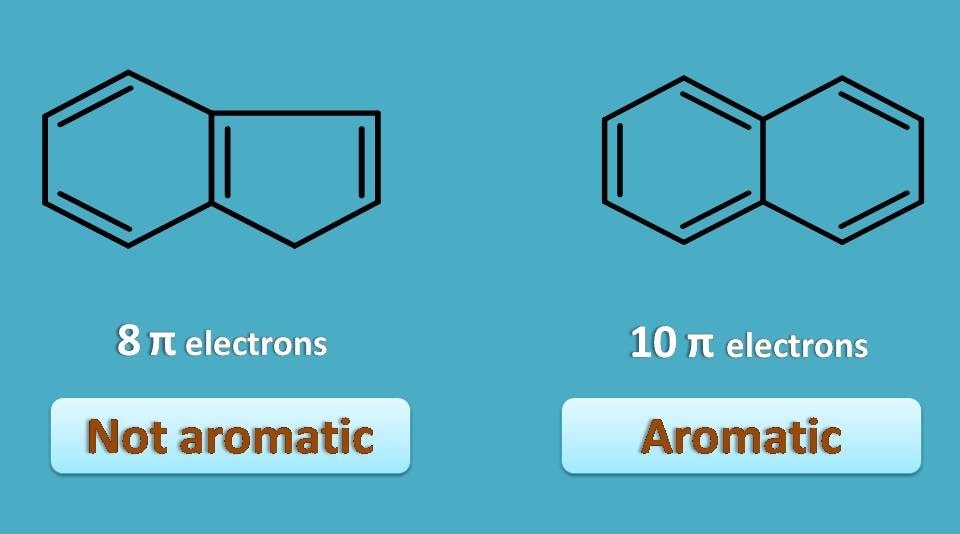
Aromaticity 4 Criteria Every Compound Needs
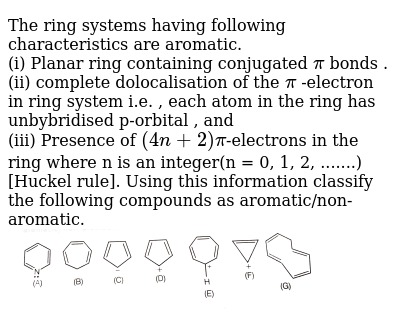
In Huckel S Rule 4n 2 P Electrons What Does N Signifies
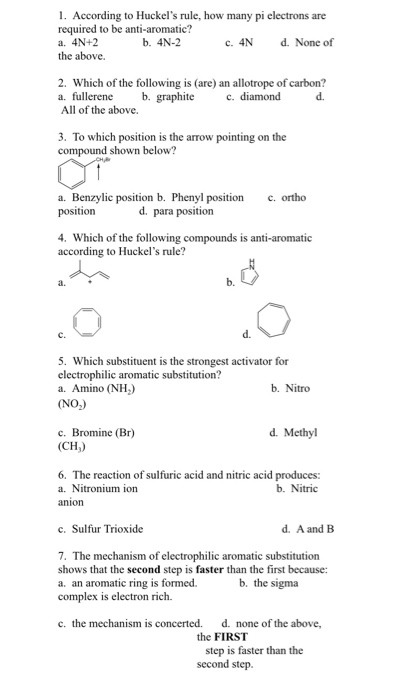
Solved 1 According To Huckel S Rule How Many Pi Electro Chegg Com

Aromaticity
Q Tbn 3aand9gcqaf Zbapguopmahlvcw9rtf17zcarenccknpalzlbhskads Zm Usqp Cau

Lecture 17 Chapter 15 Pdf Aromaticity Hckels 4n 2 Rule Only Applicable To Mono Cyclic Systems A Molecule Is Aromatic If 1 Every Atom In The Ring Has Course Hero
1
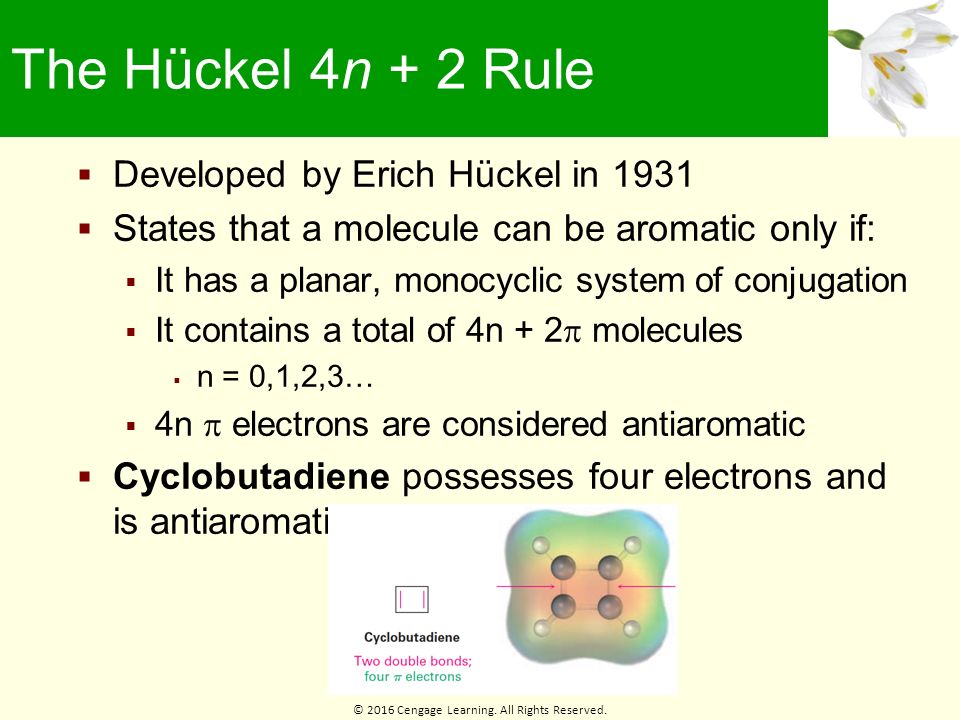
Chapter 15 Benzene And Aromaticity Ppt Download
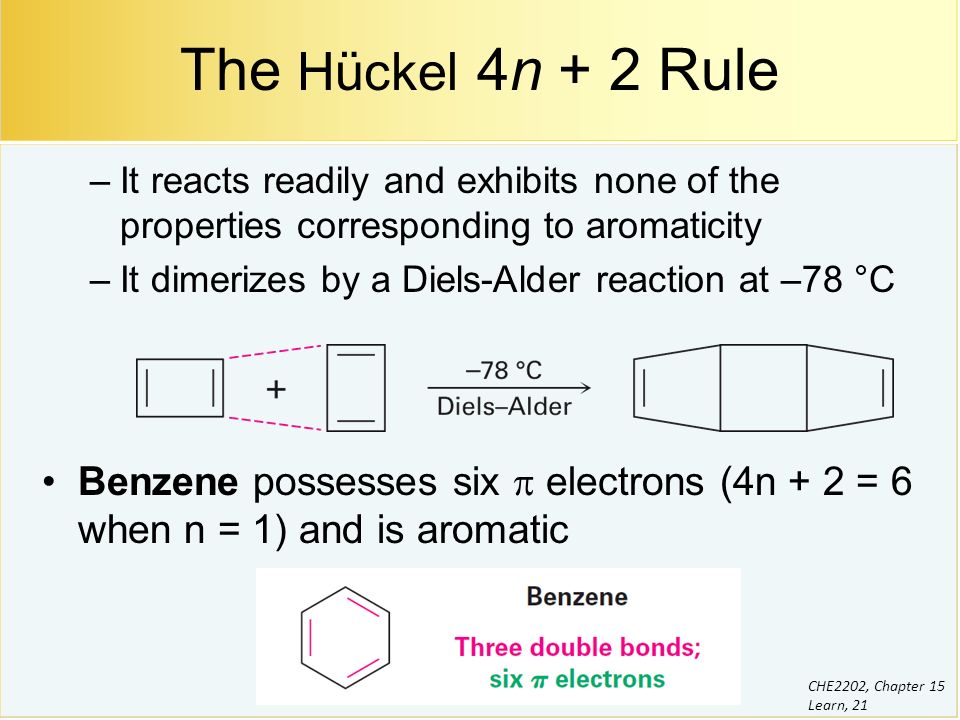
Benzene And Aromaticity Ppt Video Online Download
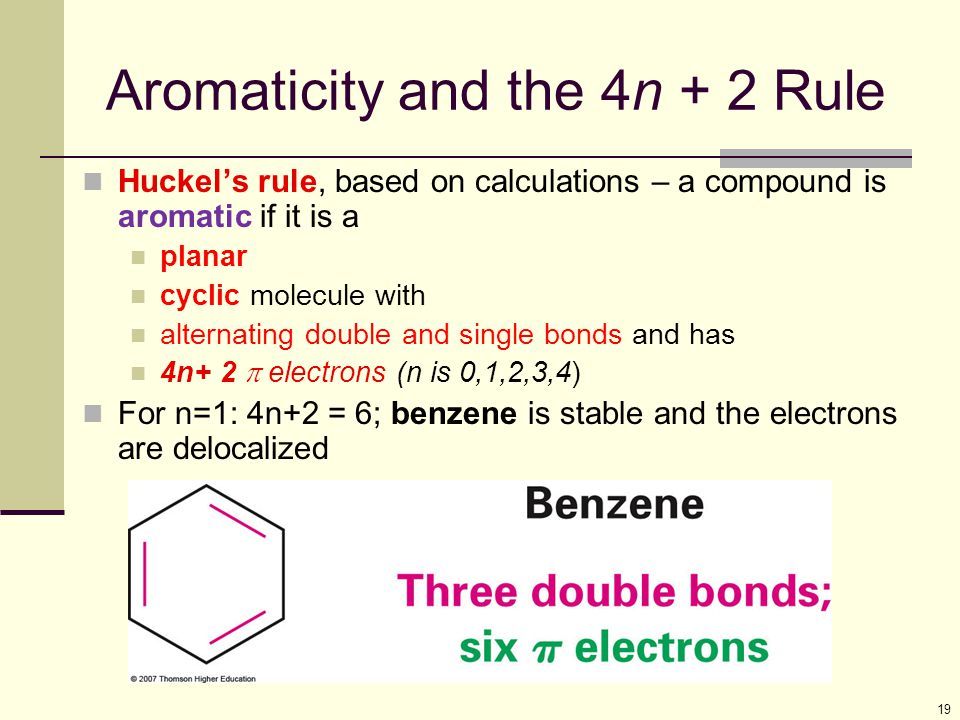
15 Benzene And Aromaticity Ppt Video Online Download
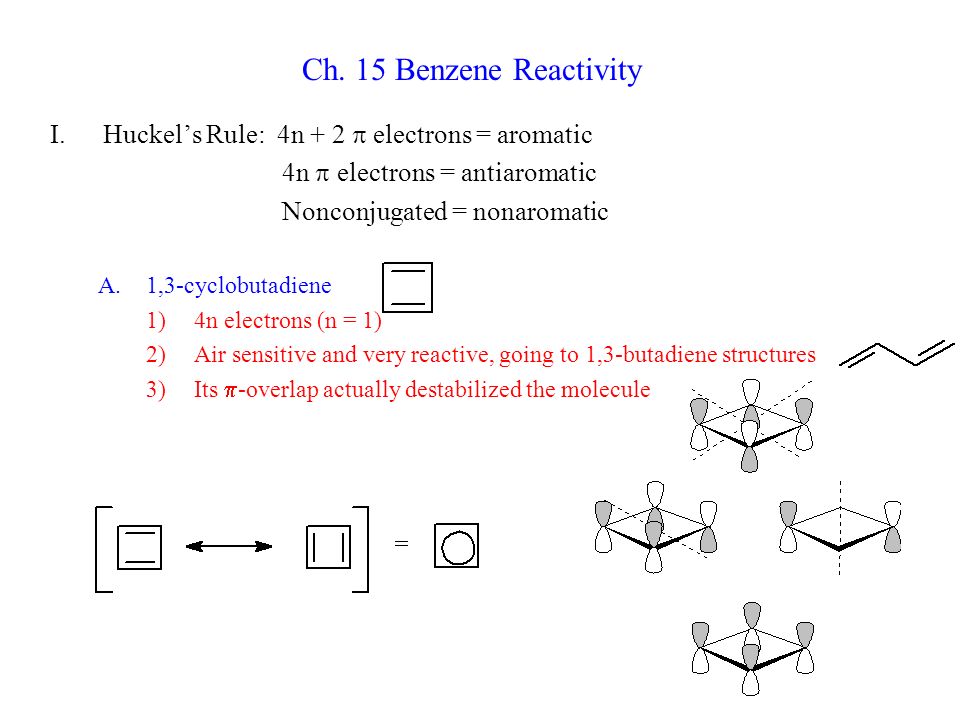
Ch 15 Benzene Reactivity Huckel S Rule 4n 2 P Electrons Aromatic Ppt Video Online Download

Aromatic Hydrocarbons Nomenclature And Isomerism Aromaticity Structure Sources Chemistry

Huckel S Rule Aromatic And Antiaromatic Compounds Chemistry Steps

13 6 Aromaticity Organic Chemistry Ii
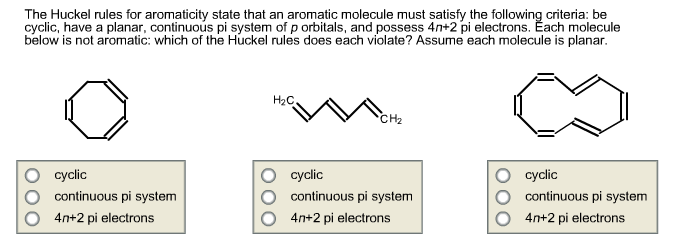
Solved The Huckel Rules For Aromaticity State That An Aro Chegg Com

Indicate Whether Each Structure Is Aromati Clutch Prep
Http Accounts Smccd Edu Batesa Chem235 238 Notes Ch17 Aromatics Print Pdf
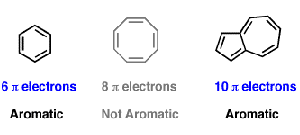
Huckel S Rule What Does 4n 2 Mean Master Organic Chemistry

In Huckels Rule 4n 2 Electrons For Aromatic Compounds What Does This N Chemistry Haloalkanes And Haloarenes Meritnation Com
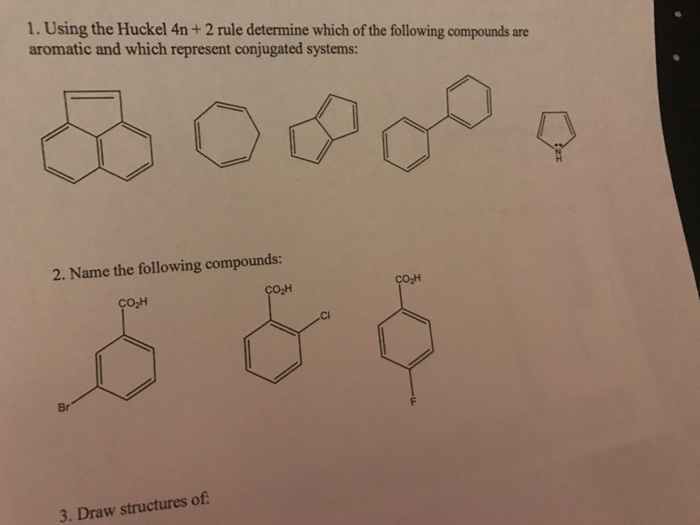
Solved Using The Huckel 4n 2 Rule Determine Which Of Th Chegg Com
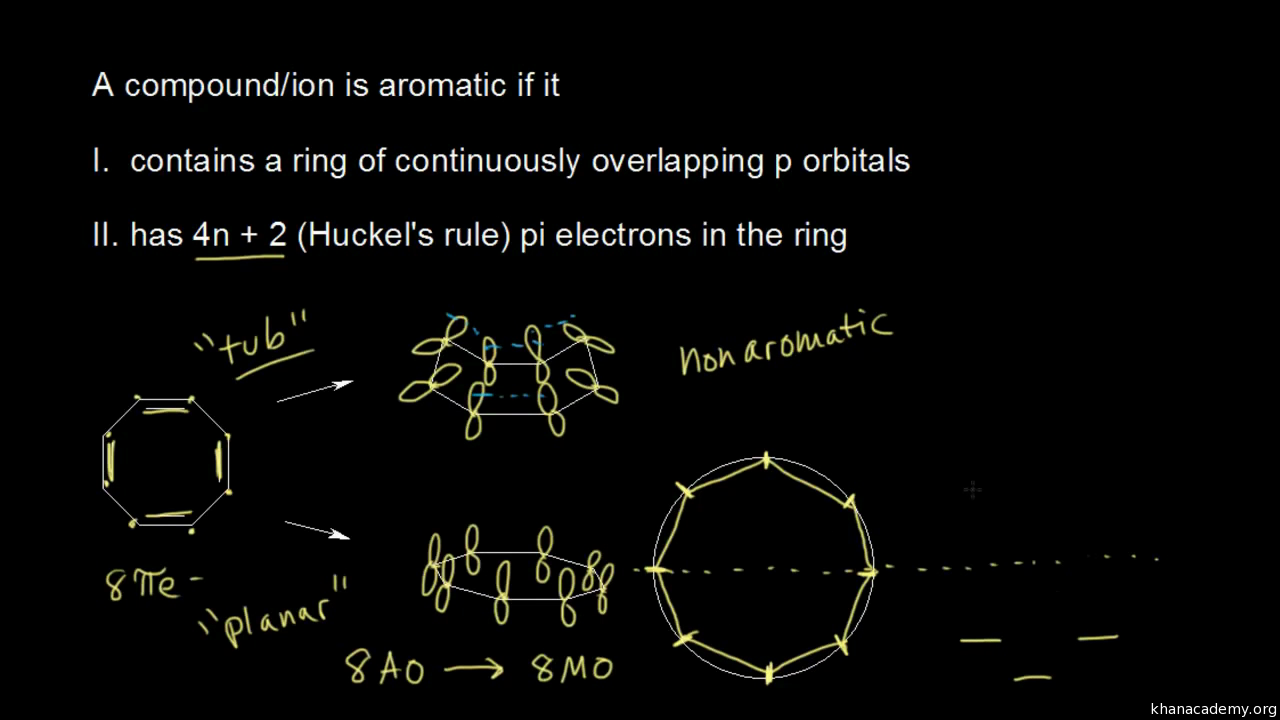
Aromatic Stability Ii Video Khan Academy

Solved Using Huckel S 4n 2 Rule And Other Applicable Cr Chegg Com
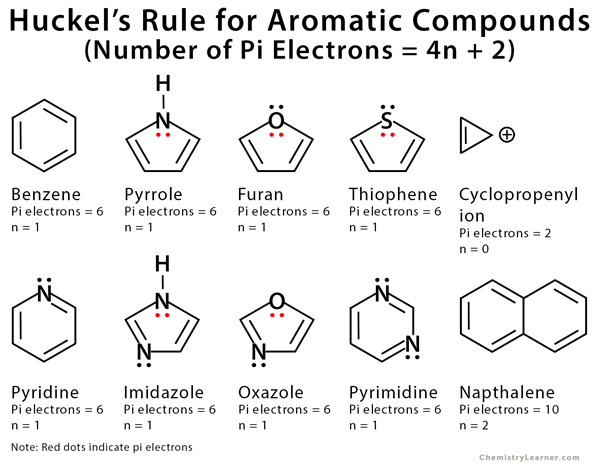
Huckel S Rule Definition Formula And Examples
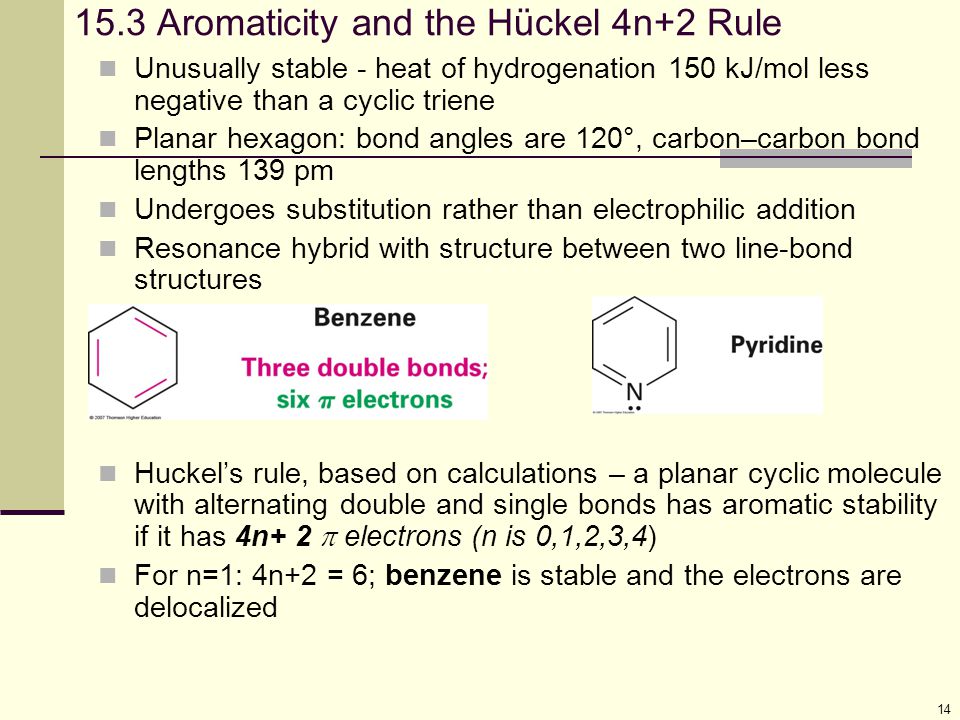
15 Benzene And Aromaticity Ppt Video Online Download

Huckel S Rule 4n 2 Rule 4n 2 Huckel S Rule 4n 2 Rule Aromaticity Youtube

A Disrotatory 4n 2 Electron Anti Aromatic Mobius Transition State For A Thermal Electrocyclic Reaction Henry Rzepa S Blog

Solved Key Ideas Huckel 4n 2 Rule Which Of The Followin Chegg Com

15 Benzene And Aromaticity Ppt Video Online Download

Huckel S Rule Organic Chemistry Video Clutch Prep
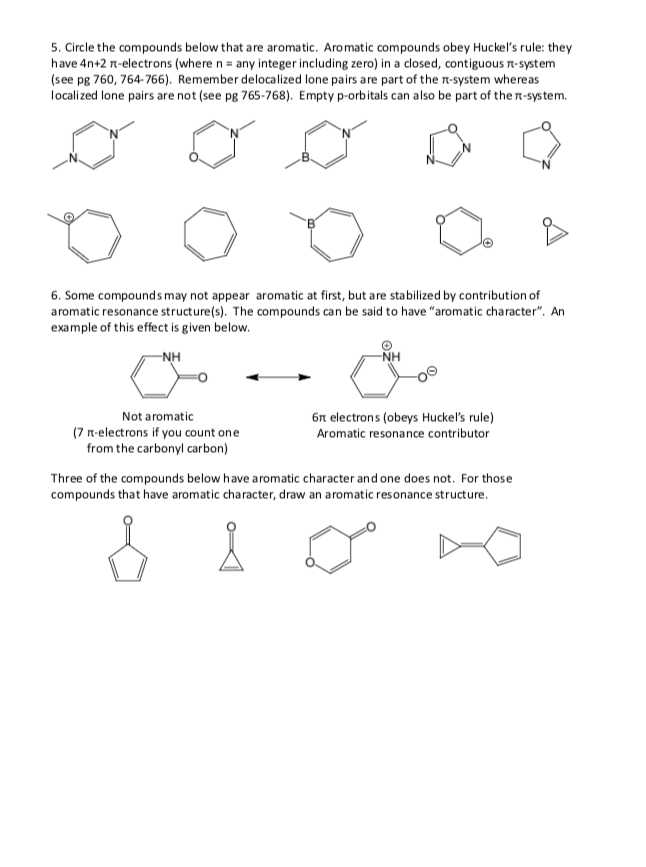
Solved 5 Circle The Compounds Below That Are Aromatic A Chegg Com

Huckel S Rule Aromatic And Antiaromatic Compounds Chemistry Steps

Which Of The Following Structures Qualify As Being Aromatic According To Huckel S Rule Homeworklib

The Concept Of Aromaticity Chempapy
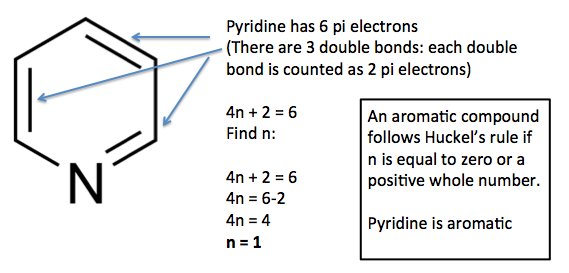
What Are Aromatic Compounds Socratic
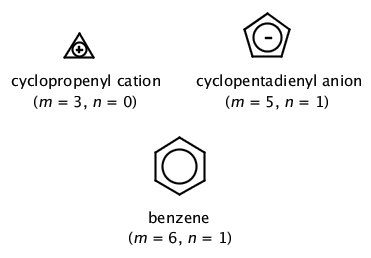
Iupac Huckel 4 Em N Em 2 Rule H

Explain Why The Following Systems Are Not Aromatic Img Src Http

Aromatic Antiaromatic Or Nonaromatic Compounds Chemistry Steps
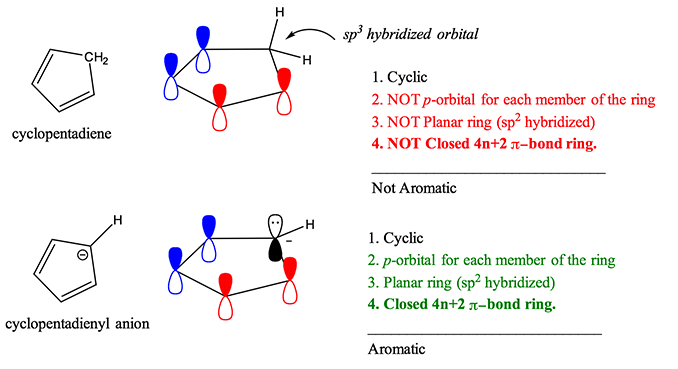
Aromaticity Rules And Definition Organic Chemistry Help

What Is An Aromatic Compound Definition Example Video Lesson Transcript Study Com

Aromatic Properties Mcat Question Of The Day

Aromatic Antiaromatic Or Nonaromatic Huckel S Rule 4n 2 Heterocycles Aromaticity Youtube

Solved 46 Huckel S Rule Requires A Electrons For An Arom Chegg Com

130 Aromaticity 23 What Is So Special About 4n 2 P Electrons Madoverchemistry Com

13 7 The Criteria For Aromaticity Huckel S Rule Chemistry Libretexts

4n 2 Rule Youtube

Aromatic Stability Ii Video Khan Academy
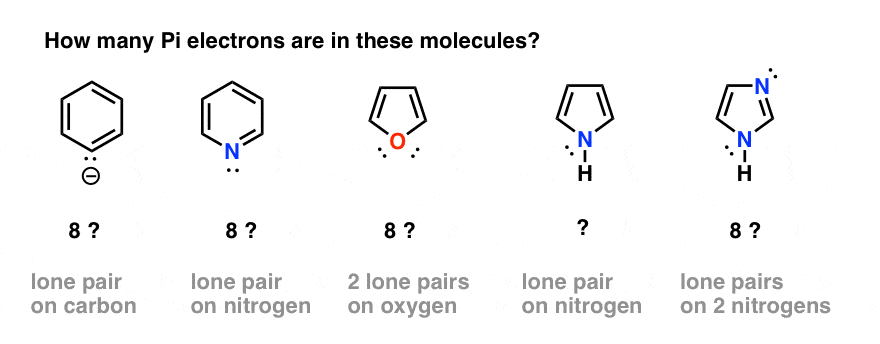
Rules For Aromaticity The 4 Key Factors Master Organic Chemistry

Illustrated Glossary Of Organic Chemistry Term

Pdf Analytical Derivation Of The Huckel 4 N 2 Rule
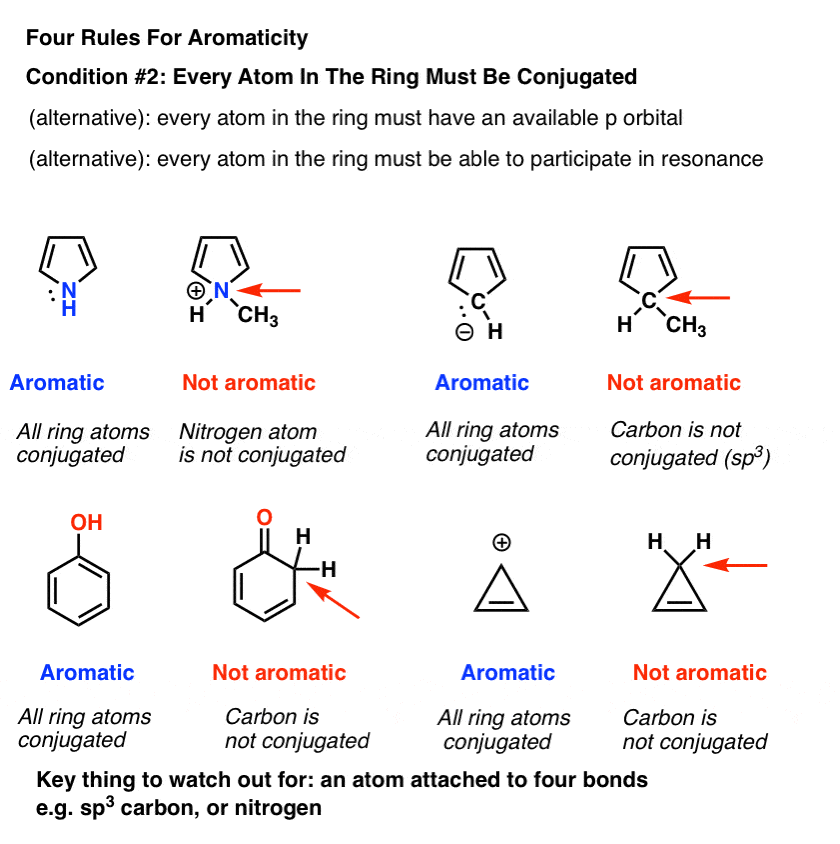
Rules For Aromaticity The 4 Key Factors Master Organic Chemistry
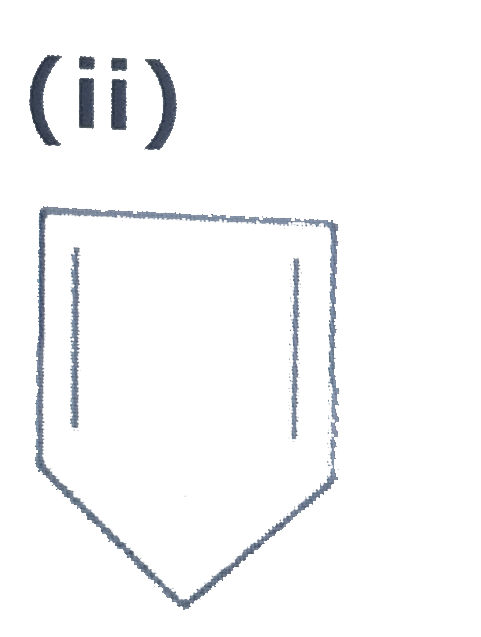
Explain Why The Following Systems Are Not Aromatic Img Src Http

Aromatic Stability I Video Khan Academy
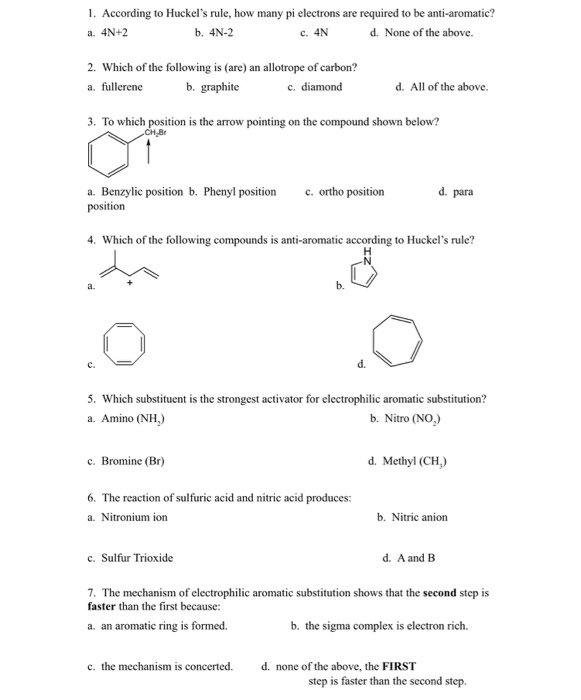
Solved 1 According To Huckel S Rule How Many Pi Electro Chegg Com

4n 2 Rule Youtube
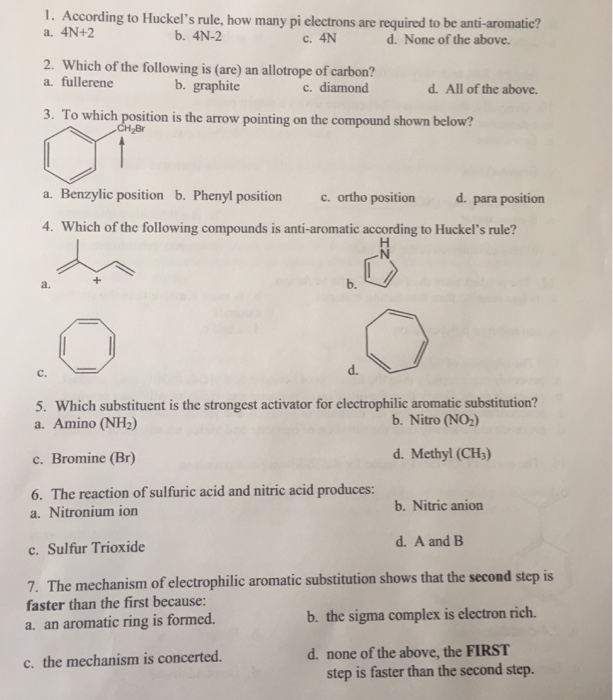
Solved 1 According To Huckel S Rule How Many Pi A 4n 2 Chegg Com
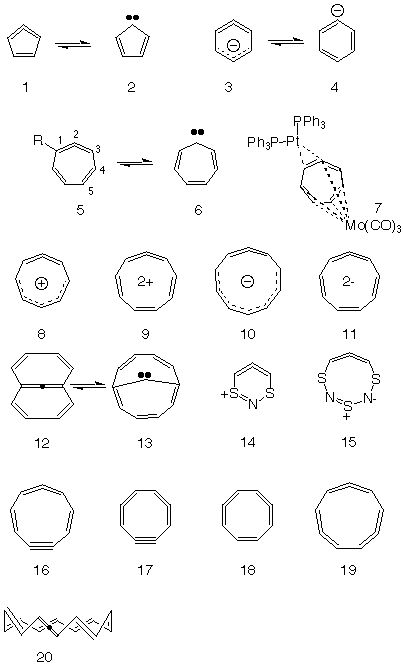
Mobius Aromatics Arising From A C C C Ring Component
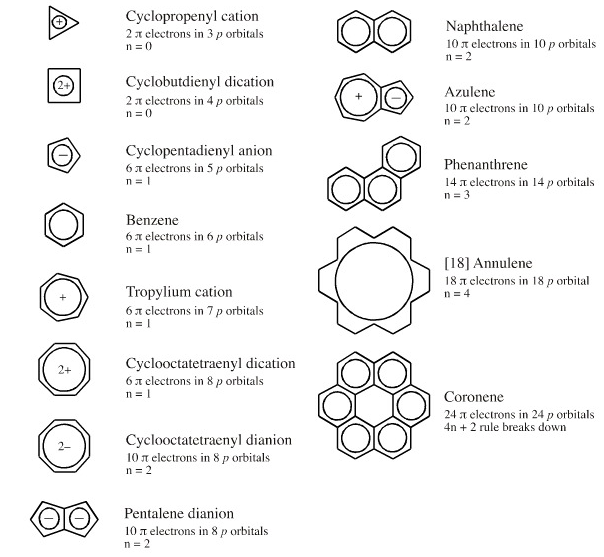
Lewis Theory Chemogenesis
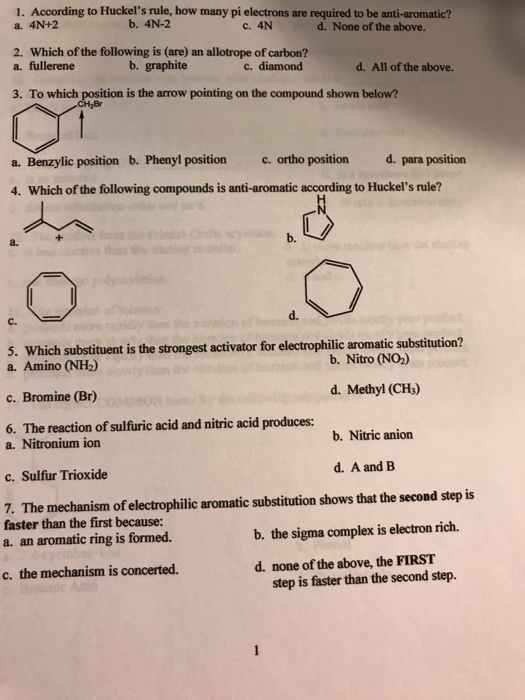
Solved 1 According To Huckel S Rule How Many Pi Electro Chegg Com
Ocw Mit Edu Courses Chemistry 5 12 Organic Chemistry I Spring 05 Lecture Handouts Aromaticity Pdf
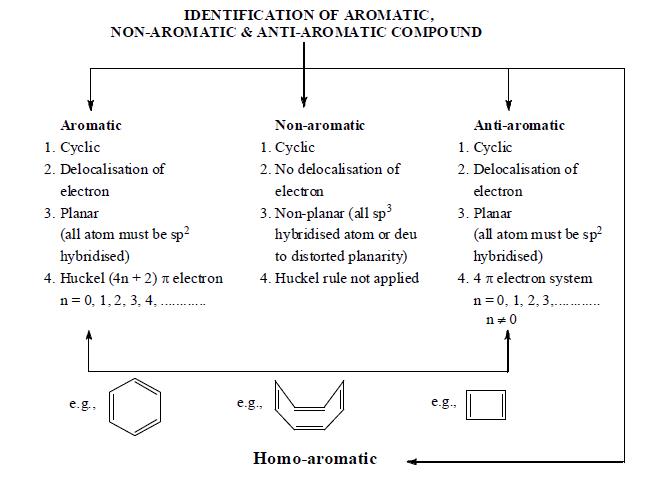
Aromaticity General Organic Chemistry Chemistry Notes Edurev
Q Tbn 3aand9gcsd3ah2vdmhe7uydhdx6apoxlogkcmi2fl06j52sg1i2jna0doq Usqp Cau

Mobius Aromaticity Wikipedia
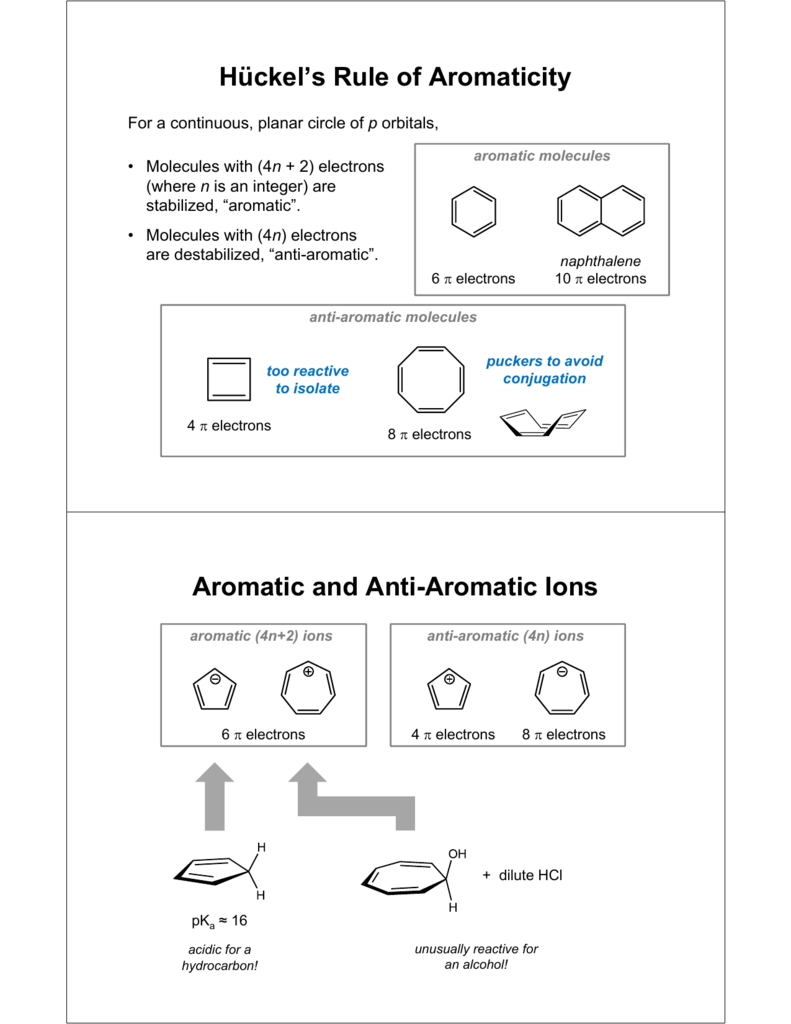
Huckel S Rule Of Aromaticity Aromatic And Anti

Pdf Aromaticity Antiaromaticity Homoaromaticity And The Huckel 4n 2 Rule

Explain Why The Following Systems Are Not Aromatic Img Src Http

The Criteria For Aromaticity Mcc Organic Chemistry

Aromatic Antiaromatic Or Non Aromatic 13 Worked Examples

Huckel S Rule What Does 4n 2 Mean Master Organic Chemistry

Chemistry Huckel S Rule 4n 2 Rule In Order To Be Facebook

Simple Trick To Find Aromatic Compounds Huckel S Rule 4n 2 Pi Electrons Rule Youtube

Huckel S Rule What Does 4n 2 Mean Master Organic Chemistry

Aromatic Antiaromatic Or Nonaromatic Huckel S Rule 4n 2 Heterocycles Aromaticity Youtube
What Is 4n 2 P Rule Quora

State With Suitable Example Of Huckel S Rule Of Aromatic Character
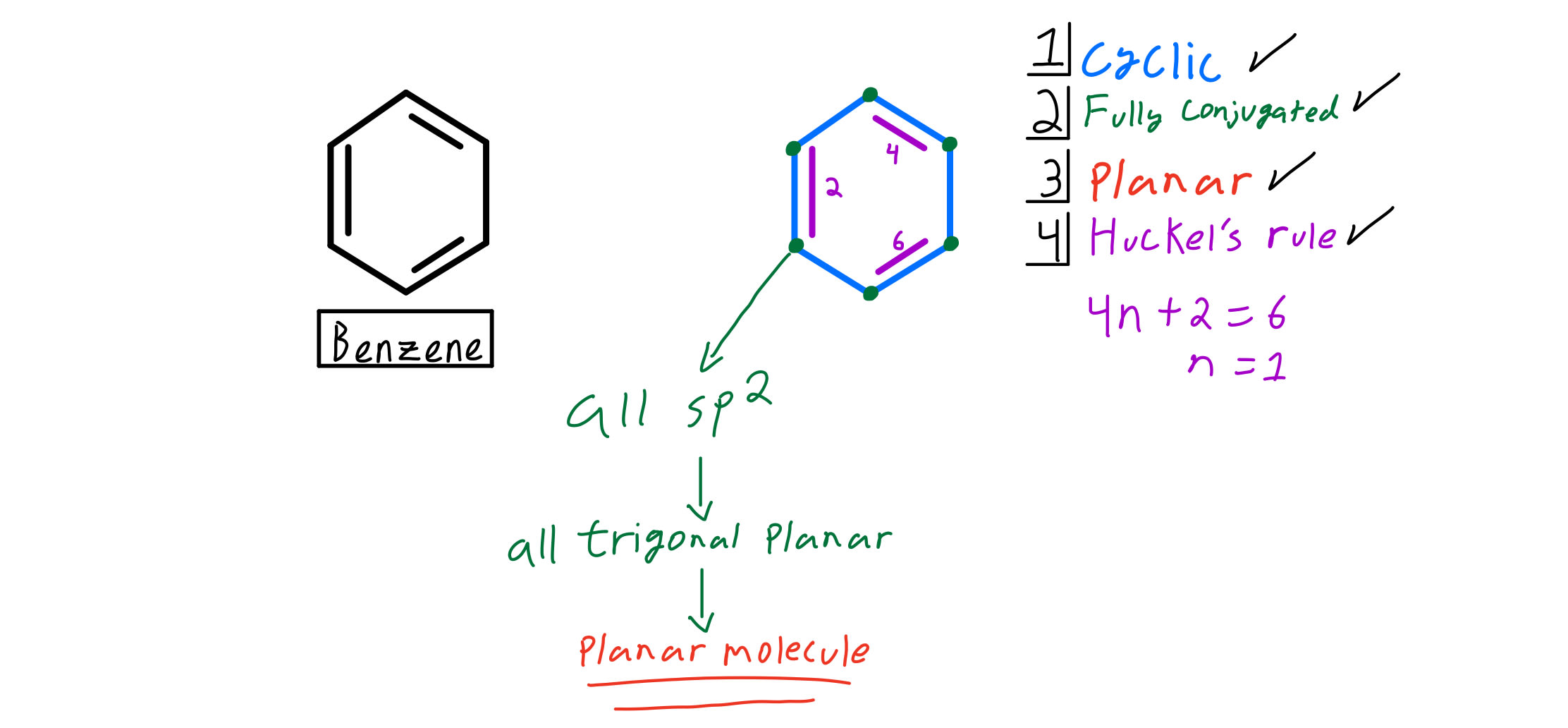
Huckel S Rule Organic Chemistry Video Clutch Prep
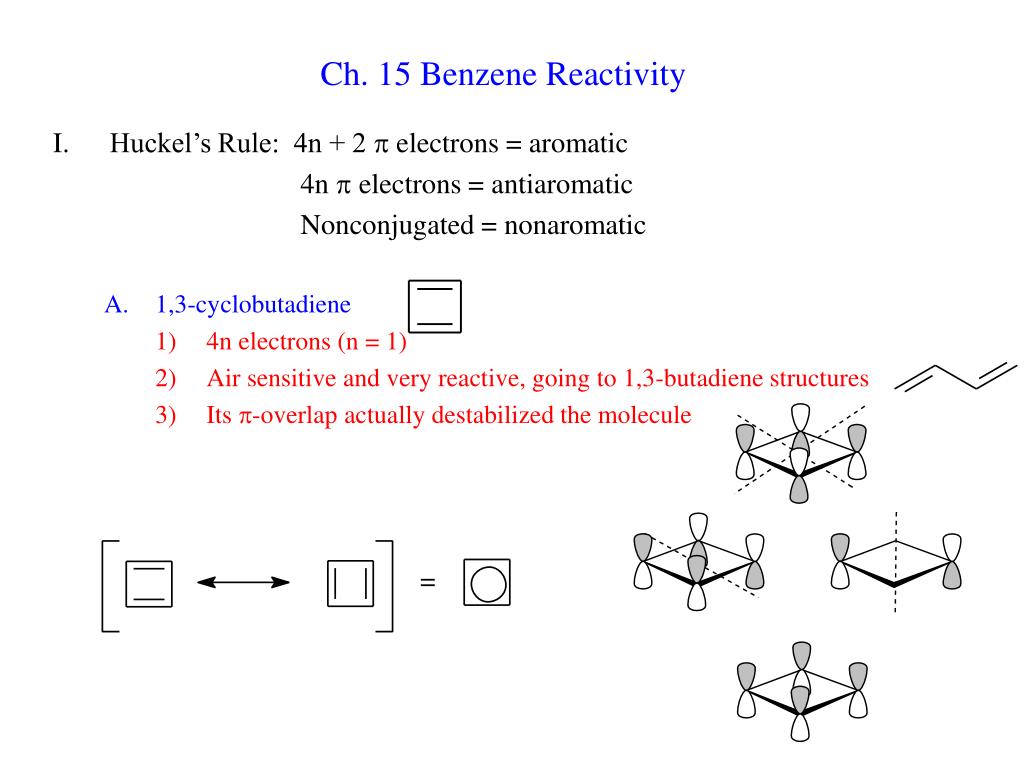
Ppt Ch 15 Benzene Reactivity Powerpoint Presentation Free Download Id

In Huckels Rule 4n 2 Electrons For Aromatic Compounds What Does This N Chemistry Haloalkanes And Haloarenes Meritnation Com
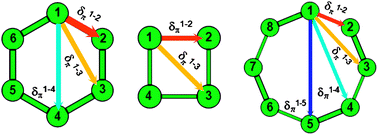
Patterns Of P Electron Delocalization In Aromatic And Antiaromatic Organic Compounds In The Light Of Huckel S 4n 2 Rule Physical Chemistry Chemical Physics Rsc Publishing

Aromaticity And Huckels Rule Powerpoint Slides

Huckel Rule Or 4n 2 Rule For Aromaticity Examples And Exceptions Youtube

Is Pyrene Aromatic Despite Failing Huckel S Rule Chemistry Stack Exchange
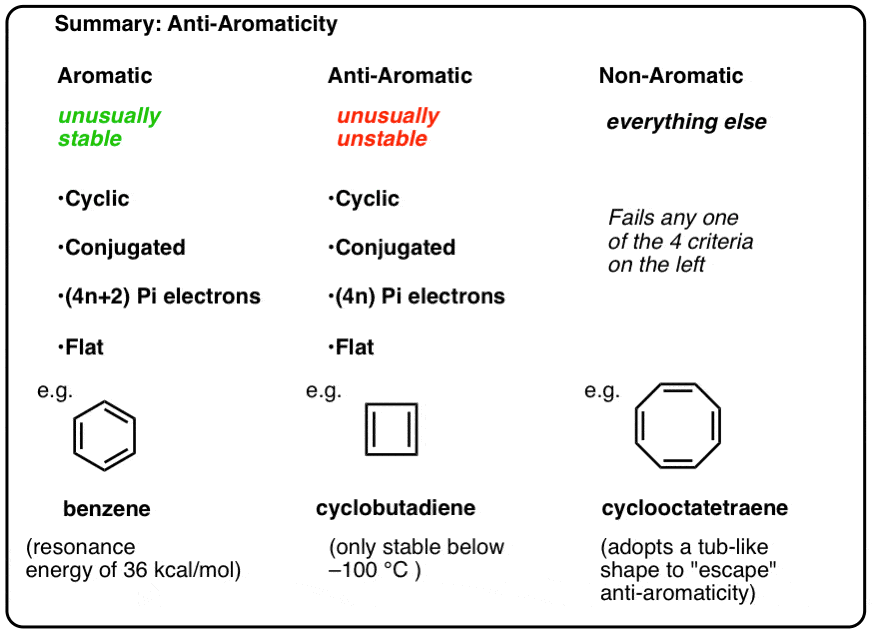
Antiaromaticity And Antiaromatic Compounds Master Organic Chemistry

Identifying Aromatic Compounds Organic Chemistry
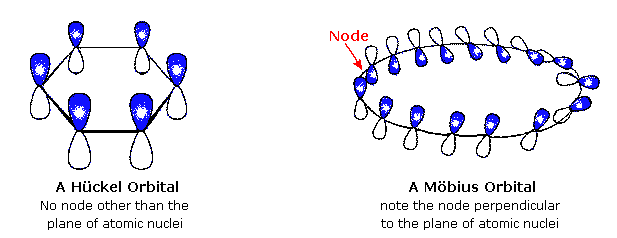
A Mobius 16 Pi Electron System
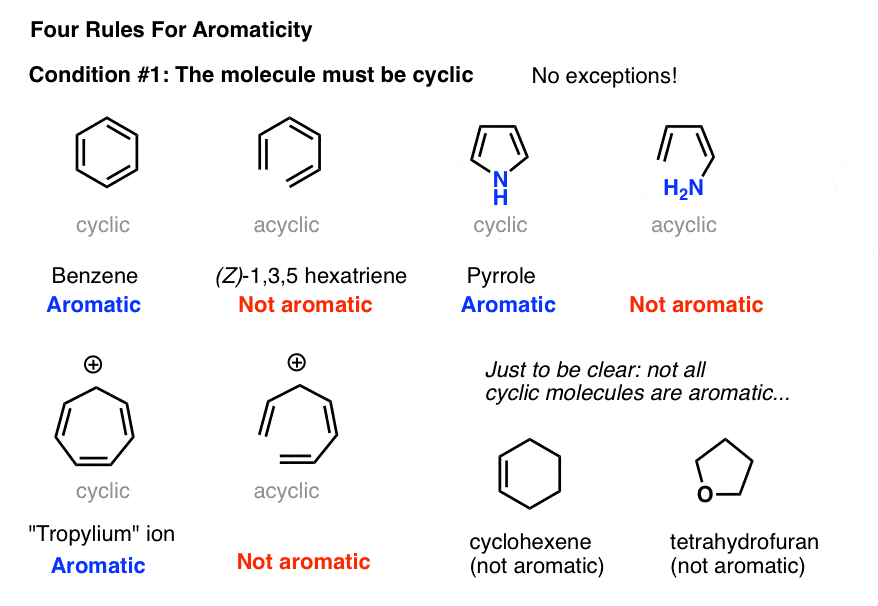
Rules For Aromaticity The 4 Key Factors Master Organic Chemistry

Aromatic Compounds Ppt Video Online Download

Solved Using Huckel S 4n 2 Rule And Other Applicable Cr Chegg Com
.jpg?revision=1&size=bestfit&width=317&height=254)
Huckel S Rule Chemistry Libretexts
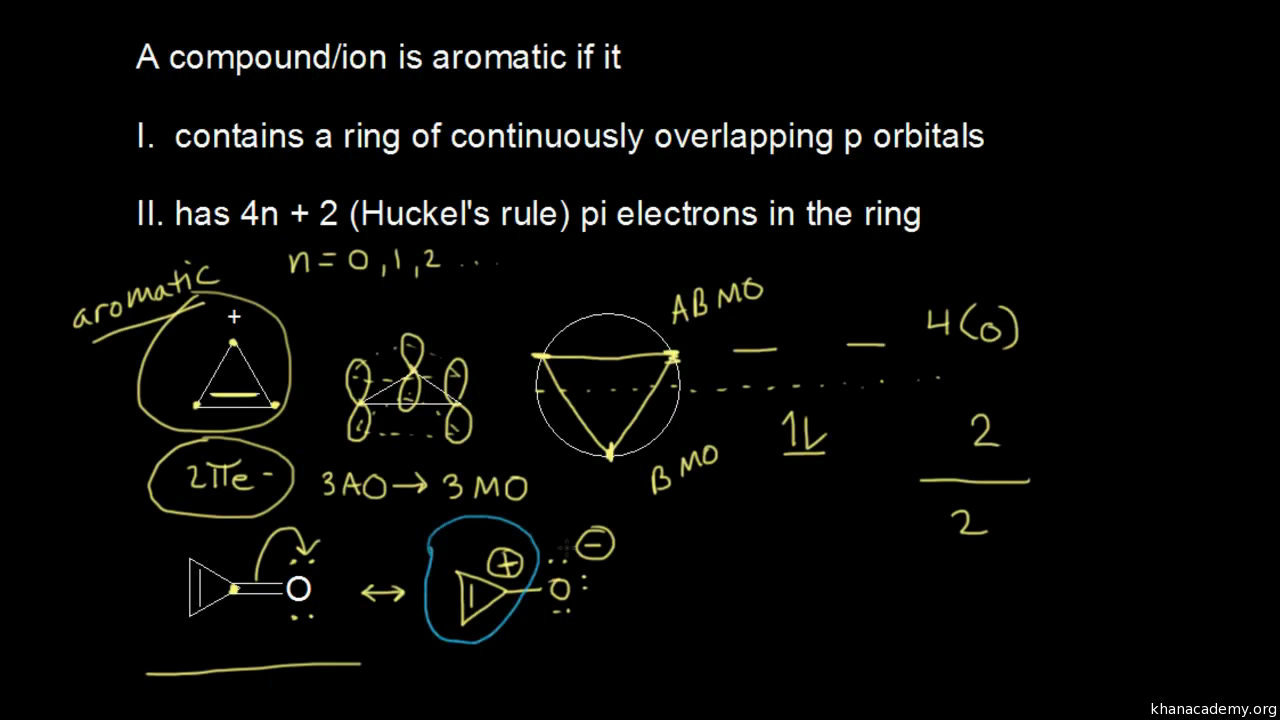
Aromatic Stability Iii Video Khan Academy
Q Tbn 3aand9gcs8smsora Trvtohxudgi3ekggh Hv5amdlsormf8wixosz8nms Usqp Cau

What Is An Aromatic Compound Definition Example Video Lesson Transcript Study Com

Huckel S Rule What Does 4n 2 Mean Master Organic Chemistry

13 6 Aromaticity Organic Chemistry Ii
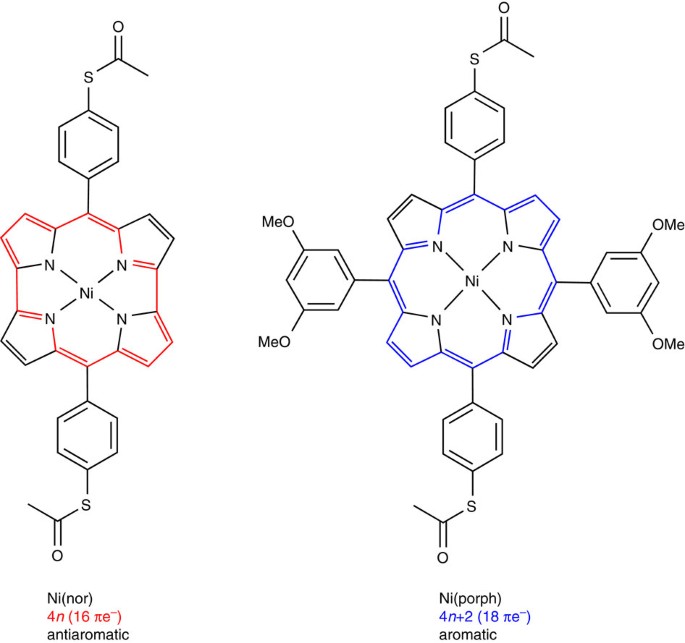
Highly Conducting Molecular Circuits Based On Antiaromaticity Nature Communications
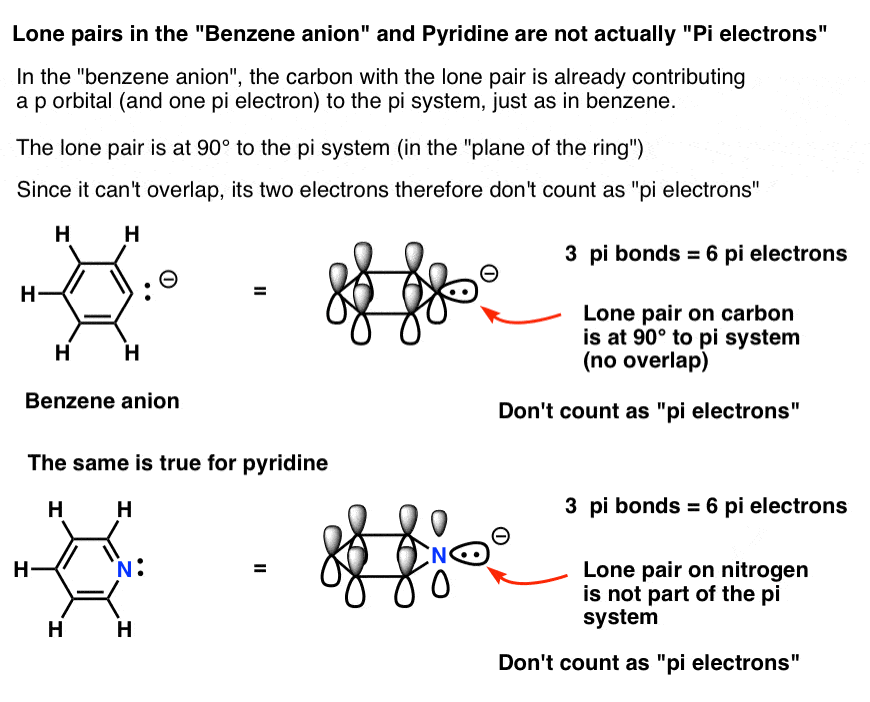
Rules For Aromaticity The 4 Key Factors Master Organic Chemistry



